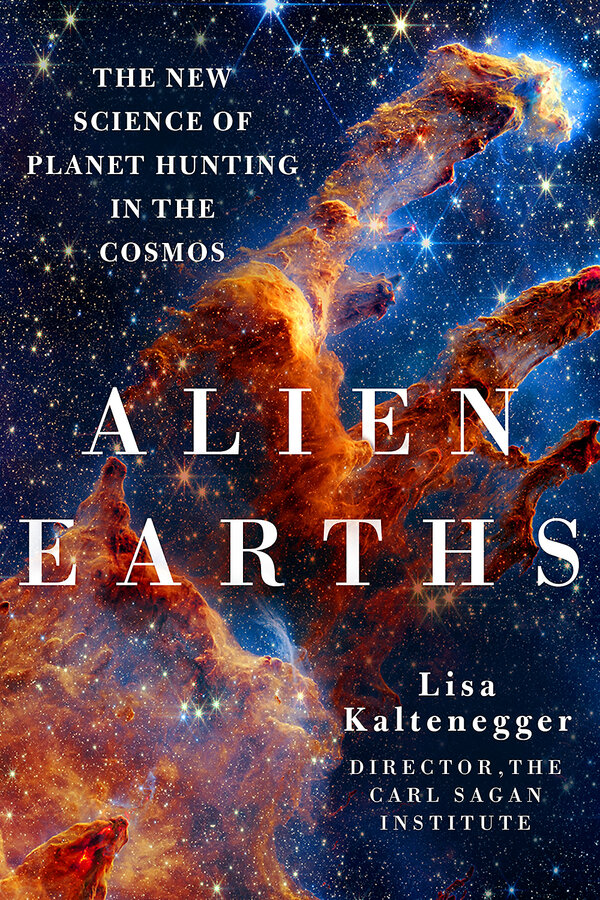Can plants talk and think? Some scientists say yes.
Loading...
Whether their research is terrestrial or celestial, scientists are finding evidence to support theories that might have been scoffed at a decade ago.
In “The Light Eaters: How the Unseen World of Plant Intelligence Offers a New Understanding of Life on Earth,” author Zoë Schlanger notes that advanced technology has enabled botanists to come to “previously outlandish conclusions with real rigor.” Astrophysicist Lisa Kaltenegger makes a similar point in “Alien Earths: The New Science of Planet Hunting in the Cosmos,” which documents the search for extraterrestrial life. She observes that the recent success of cutting-edge equipment in locating potentially habitable planets instantly transformed her research “from far-fetched to applied.”
Whether focusing on a single pea shoot or on a rocky orb in a solar system hundreds of light-years away, these fascinating books feature discoveries that sound like the stuff of science fiction. Each author’s unabashed enthusiasm for her subject is engaging, and each makes her material accessible to general readers.
Schlanger is a journalist who began investigating plant life in her spare time as an antidote to the bleakness of her usual beats: pollution and climate change. She ended up quitting her day job to devote herself to writing “The Light Eaters,” her debut. (She is now a staff reporter at The Atlantic.) Schlanger’s research sent her throughout the United States and to Germany, Chile, Scotland, and beyond, where she was heartened by both the remarkable adaptability of plants and the passion of the scientists studying them.
The question animating the book is one that has caused, in the author’s words, “an all-out war” among botanists: Can plants be considered intelligent? “The Light Eaters” includes tantalizing evidence for the controversial claim that plants act with agency and intentionality. Some plants alter their chemistry to make themselves less appealing to predators; others synthesize compounds that attract the predators of the insects feeding on their leaves. Schlanger also offers examples of plants that behave socially, spreading their roots aggressively when surrounded by unrelated specimens but limiting their growth when planted alongside their kin.
In some ways, the author acknowledges, determining whether these survival techniques constitute intelligence is a semantic issue, one heavily informed by human conceptions of consciousness. Many scientists agree that plants, in Schlanger’s words, can “process multiple forms of information to make well-informed decisions.” Still, much remains unknown. While it is clear that plants make decisions, it is less clear how. Where, in an organism without a brain, is the decision center located?
Understanding plant intelligence could have practical applications. For instance, researchers have found that exposing arabidopsis plants to recordings of caterpillars chewing leaves results in the plants producing defensive compounds that deter the predators. (Yes, some plants seem to be able to hear.) “If plants could be made to produce pesticides through simply playing sounds to them, it could reduce or eliminate the need for synthetic pesticides on farms,” Schlanger reasons, adding, “One can imagine a future where farmers set up boom boxes instead of crop dusters.”
One of the pleasures of “The Light Eaters” is Schlanger’s vivid depictions of the scientists she encounters. Many, she finds, are “totally in love with their subjects,” which they approach with “volcanic enthusiasm.”
“Alien Earths” author Kaltenegger, who founded and directs the Carl Sagan Institute at Cornell University, fits that description.
Kaltenegger traces her interest in space to her childhood in Austria, where, she recalls, “the streetlights turned off around 9 p.m., sending me into velvet darkness watched over by thousands of stars, opening my world way beyond our own planet.” She was one of the scientists who worked on the James Webb Space Telescope, one of the tools now helping to unlock the mysteries of the starry sky.
The author’s tone is one of curiosity and wonder. She is not expecting to find planets populated by intelligent humanoid creatures. Rather, she believes that “a mixture of the familiar rules of physics and the laws of evolution should produce organisms that could be entirely unlike those we recognize but perfectly adapted to their worlds.”
Certain conditions for life must be met, however. “For now,” Kaltenegger writes, “our best bet is an atmosphere with a combination of oxygen and methane on a planet that is in the habitable zone of its star. So that is the Goldilocks region where astronomers point their telescopes.” The search made a leap in progress when the Kepler space telescope, launched by NASA in 2009, identified two small exoplanets – planets outside our solar system – orbiting the star Kepler-62. They are two of what scientists believe are billions of rocky planets that are orbiting stars at an appropriate distance to create life.
Kaltenegger’s team doesn’t rely solely on astronomers. Her Sagan Institute is interdisciplinary, enlisting geologists, biologists, and chemists for its work. The institute’s methods include creating computer models and growing microbes in a lab in order to anticipate what alien life might look like so they recognize it when they see it.
The focus on multiple perspectives doesn’t end there. There are still some male scientists “trapped in the Stone Age,” Kaltenegger says, who can keep women from advancing in competitive environments. (Similarly, Schlanger alludes to professional challenges faced by women researching plant intelligence.)
Kaltenegger believes that the quest to find extraterrestrial life demands “the broadest, the most diverse, spectrum of thinkers working together. People from all backgrounds, cultures, and genders are needed, in the hope that in pooling our different perspectives we will broaden the scope of our thinking and expertise sufficiently to make the breakthroughs we need.” In short, it’ll take all kinds of humans to find signs of alien life.








